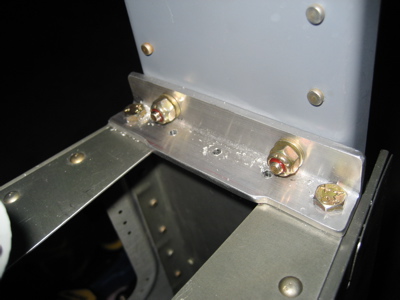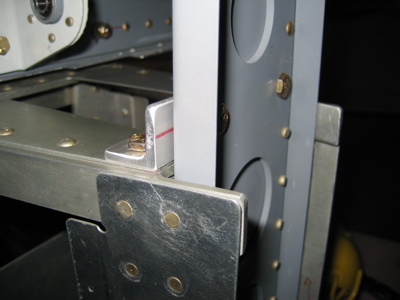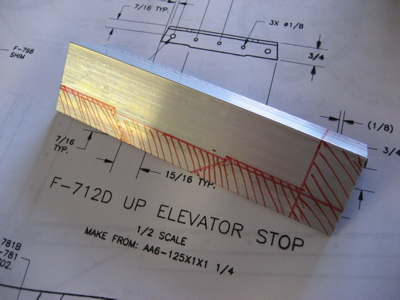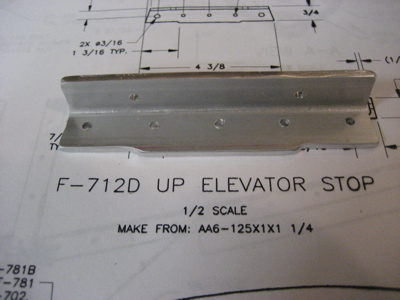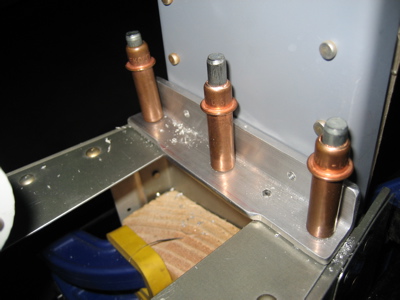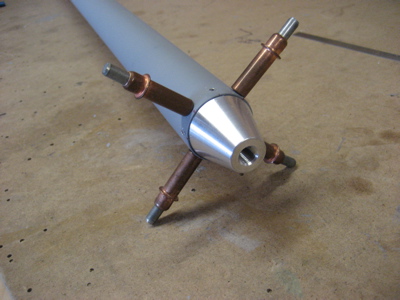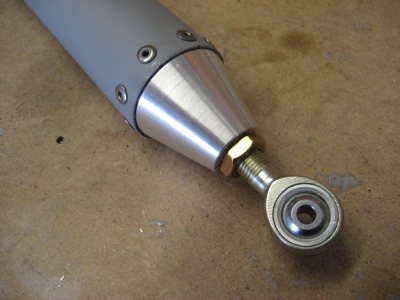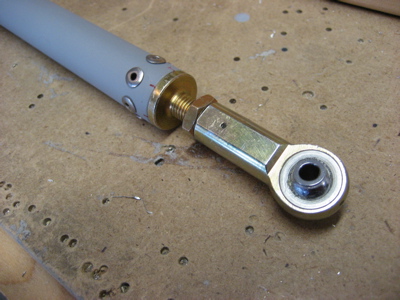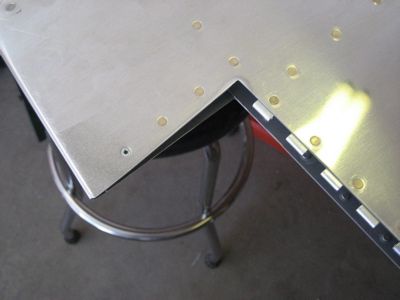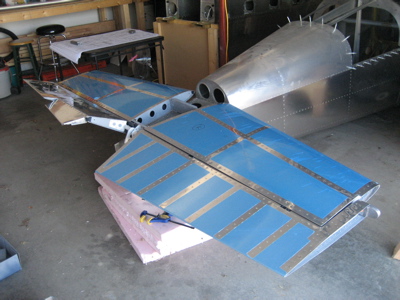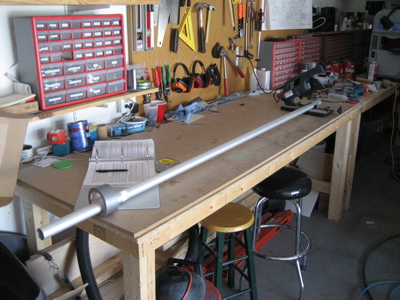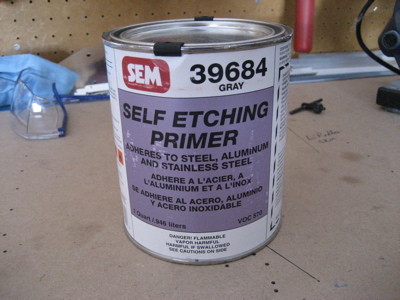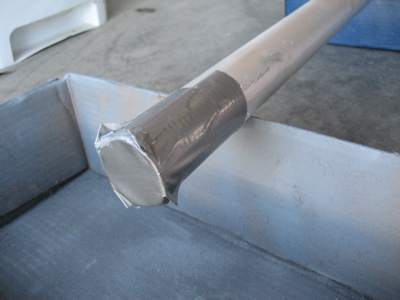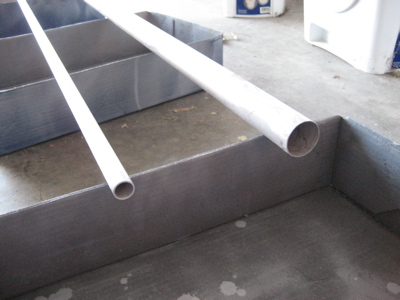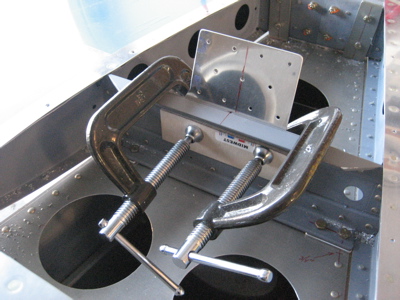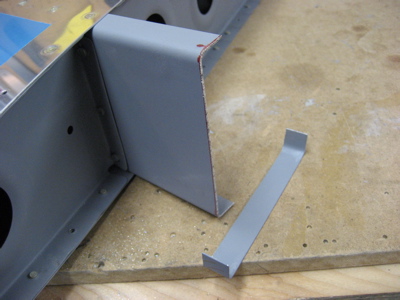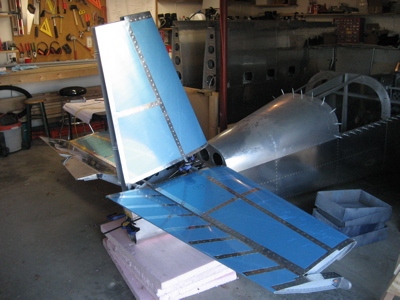I was going to work on the brake lines some more today, but I didn't receive all the parts I ordered earlier this week – one box of AN fittings from Wicks got shipped to the wrong address and subsequently lost. Kudos to the Wicks people, though – they were able to help me figure out what happened and get a replacement order on its way, at no charge – on a Saturday. Everybody go give Wicks some business, they deserve it. Even if you don't need any airplane parts, they're having a sale on toy gliders, and who doesn't like toy gliders? Nobody, that's who. If there are any such people I refuse to accept it.
Anyway, so not enough parts to work on the brakes. The only things left in the fuselage plans are mounting the wings, which I already decided not to do yet, and mounting the tail. Okay, let's mount the horizontal stabilizer today. I dug out the HS and elevators from the storeroom and rigged them on the bench to make sure everything still fits:
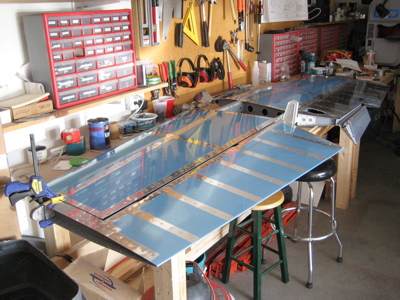
Somehow, the bottom of my left elevator has developed this mysterious dent. I'm not sure what caused it. At least it's on the bottom surface – it will probably eventually be joined by more little dents as rocks and stuff hit the bottom of the tail when the tailwheel is on the ground.
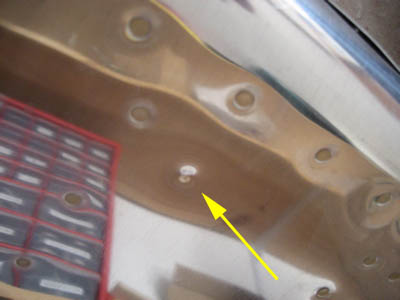
I clamped both elevators exactly in trail, to align everything for the drilling of the elevator control horns.
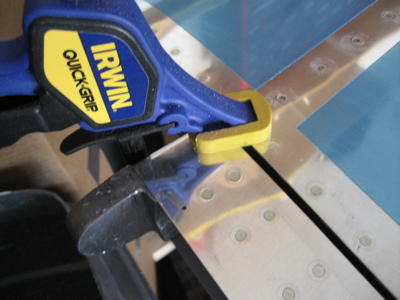
Some people have trouble with their elevator horns not lining up very well. They're welded individually, so it's likely that there will be some misalignment when you bring the two elevators together. Mine were almost exactly identical, though, which is good.
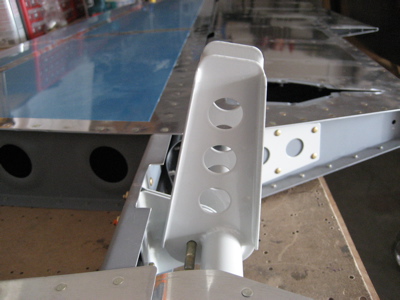
The left horn was just a fraction of an inch forward of the right one, so the left elevator was the one to get the first hole drilled in it. I took the elevator back off the stabilizer to make sure the pilot hole for the pushrod bolt was in the right spot.
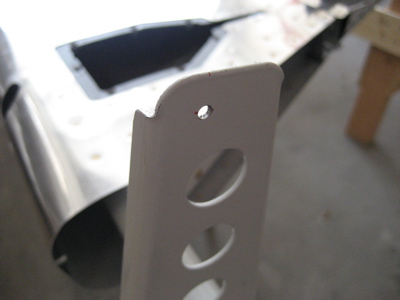
With everything back together again, I measured the distance between the two faces of the control horns at the approximate location of the bolt hole…
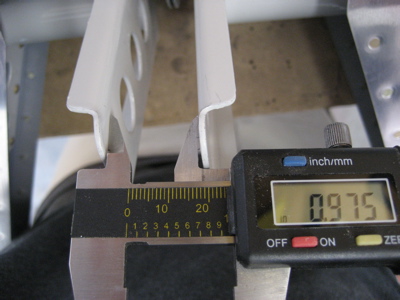
Then I made a simple drill jig out of a sandwich of 3/16" birch plywood squares glued together, with a hole drilled perpindicular to the face with a drill press. This got clamped between the elevator horns, and then I transferred the pilot hole across to the right elevator horn. You have to do it this way because you don't want the bolt that joins the two elevator horns to the pushrod to be crooked.
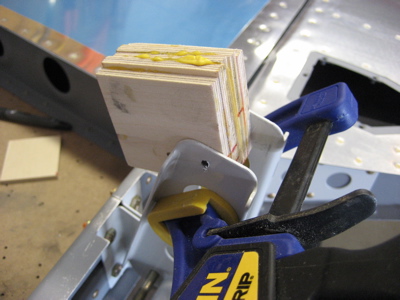
I drilled and then reamed the pilot holes up to 3/16", then trial fitted a bolt. Yep, I'd say that's straight all right.
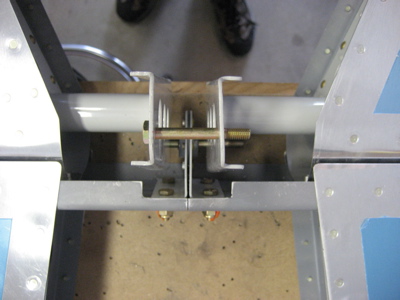
Next I made the F-798 shims, which go between the HS mounting flange and the aft fuselage deck. This photo makes them look like they're not the right shape, but they are – must be the camera angle.
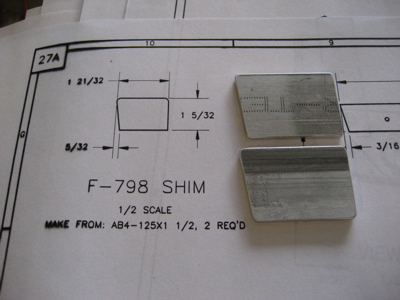
I had to rearrange the garage to let me fit the horizontal stabilizer onto the fuselage – then, I clamped it to the aft fuselage and measured, measured, measured until I got everything lined up and straight. To help make sure the stabilizer was exactly perpindicular to the long axis of the fuselage, I drilled a hole in a tape measure; by clecoing it to one particular rivet hole on either side of the firewall and pulling it tight, I was able to measure the distance from the firewall to the stabilizer tips without anyone around to hold the other end for me (important tip for those of us building mostly solo!).
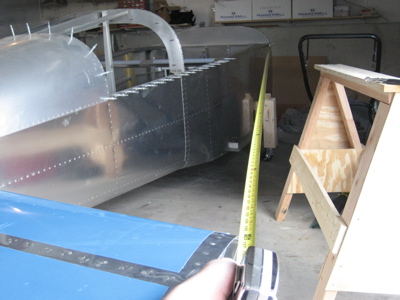
I tweaked and tweaked until both sides measured exactly the same – 156 3/16" in this case. The hole in the tape measure was right at the 1" mark, by the way.
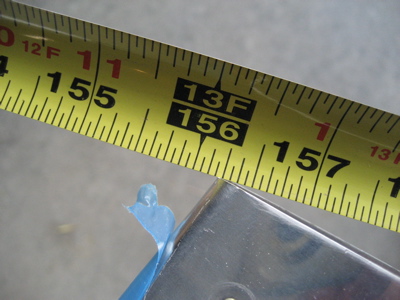
There are four bolts that hold the forward HS spar to the fuselage. The two outboard ones are a real pain – each of those bolts has to go through five or six layers of stuff, which means you have to do a ton of very careful measuring to make sure that that one hole has adequate edge distance on every part it goes through. Here's a view of the underside of one of these areas, where the bolt has to go through the longeron, a spacer, and an angle (and then the aft deck, the F-798 spacer, and the forward HS mounting flange). Of course, the quickbuilders also seem to have cut the F-710B angle a little bit short on my airplane, reducing the margin for error even further. By the way, you can't actually see any of this stuff inside the fuselage – I had to use an inspection mirror and take lots of photos like this in order to get an idea of how things were going to work out. Thank goodness I have a small camera…
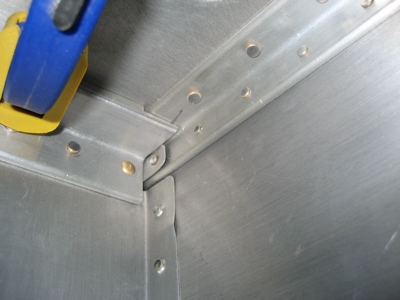
After lots and lots of measuring, I got out the drill and made some pilot holes for the outer forward holes. Hooray, they both came through right where I wanted them. Here's a view of the right side – the left is similar:
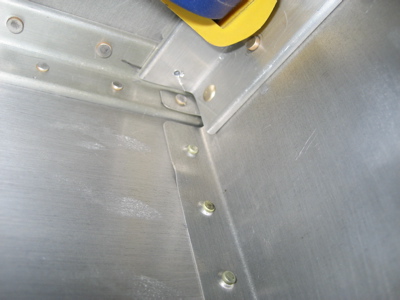
I drilled and reamed the holes up to 3/16", then put some nuts and bolts in. You can see the shims in place there – I decided to ignore the part where the plans tell you to drill the stabilizer to the fuselage without the shims in place, and then put the shims in and match drill the holes. It seemed like it would be easier just to clamp the heck out of everything and drill all the parts all at once, which is what I did. Everything looks good here.
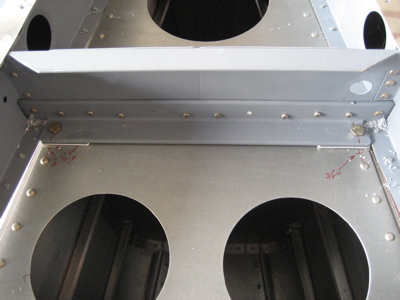
Much measuring later, the other pair of bolts are in. To properly locate these, I had to take the stabilizer off and measure, but I'll spare you the boring details.
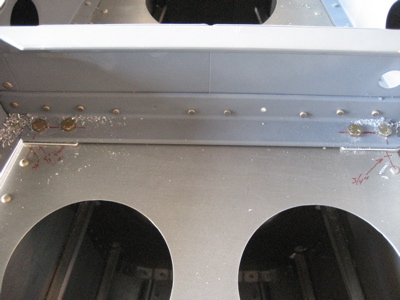
Here's a view of the nuts on the left side:
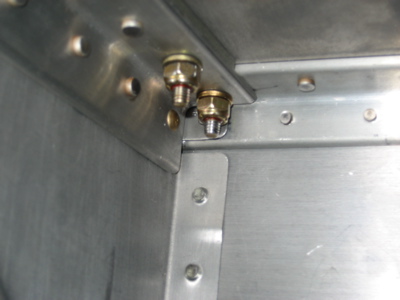
After lots more measuring, here are the other four bolts that hold on the rear stabilizer spar. I used a 3/16" drill bit as a spacer between the rear spar and the aft deck, as suggested by the plans. This puts the stabilizer at a 0° angle of incidence with the aft deck and longerons, which I verified through careful measuring. None of the hole locations on this end of the stabilizer are marked for you either, but at least you can see what you're doing a little better.
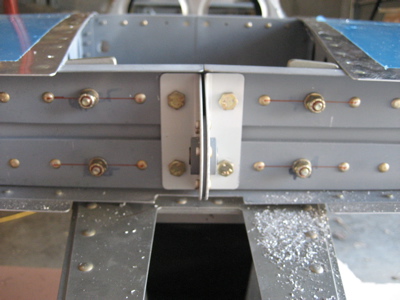
Careful measuring pays off – the bolts are centered vertically on the stabilizer reinforcement bars, and almost exactly on the centerlines of the stabilizer mounting bars. Acres of edge distance everywhere.
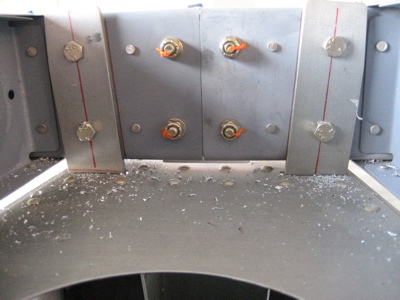
It's kind of starting to look like an airplane!
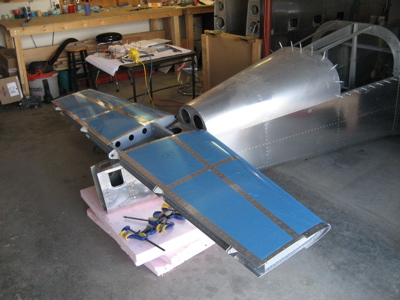
Not shown in the above photos are the hours I spent getting things lined up, taking the stabilizer off to mark something, measuring another dozen times to line things up again, etc. You only get one chance at this so I wanted to make sure that everything was as precise as I could make it. Fortunately, It all seems to have turned out pretty well.
